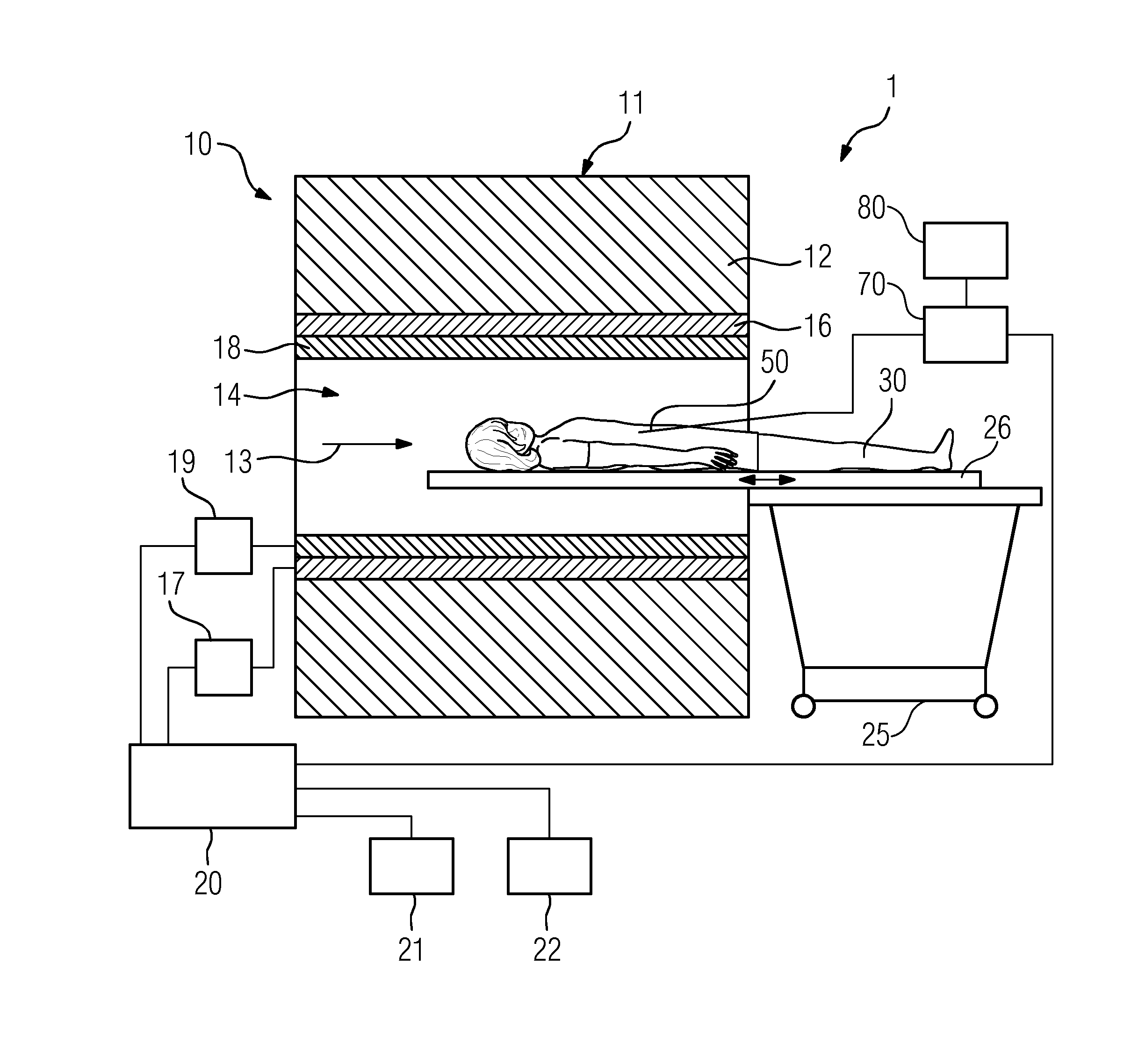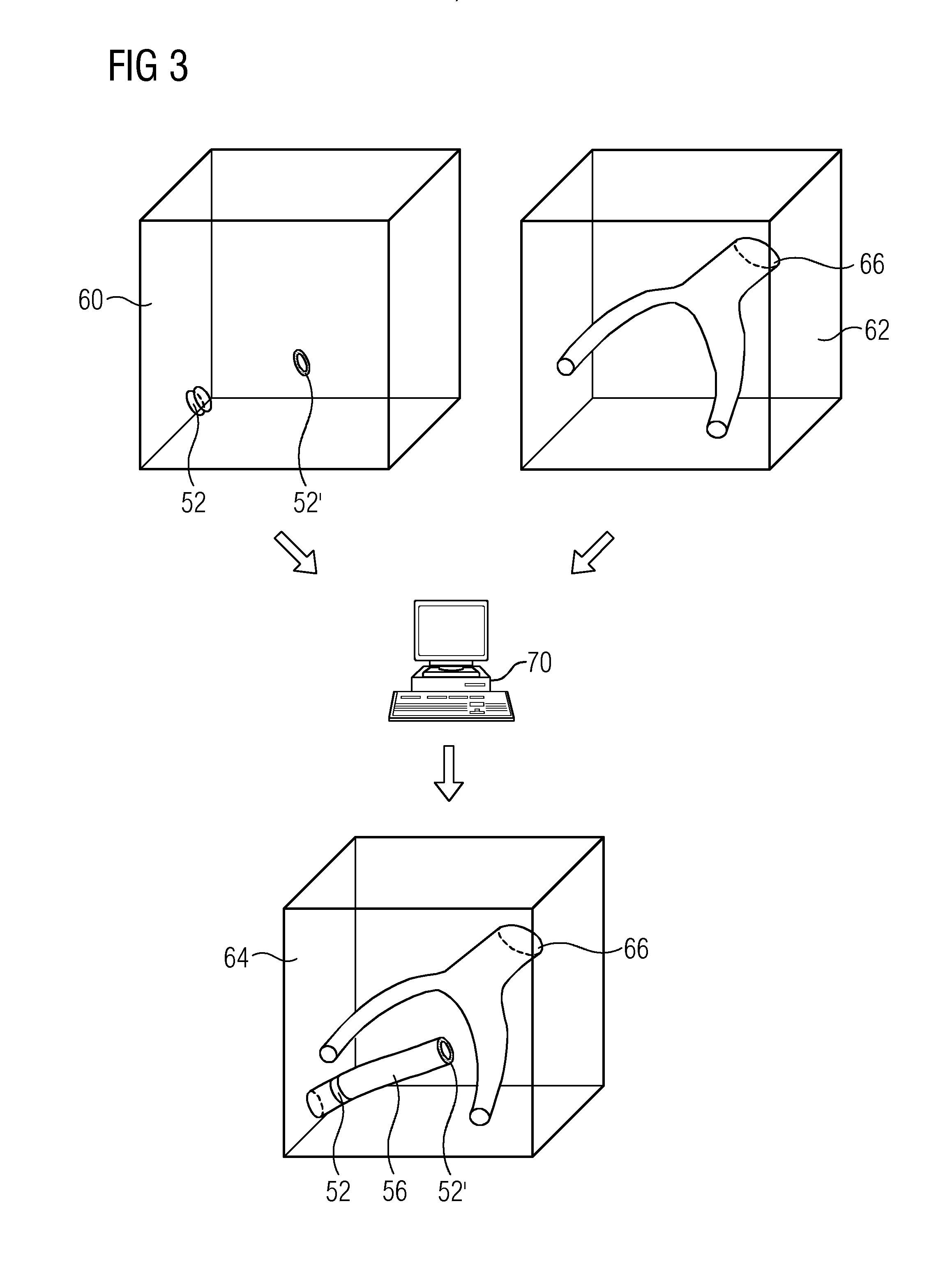Obtaining a Three-dimensional Image of a Medical Instrument with a Magnetic Resonance Tomography Device
- Summary
- Abstract
- Description
- Claims
- Application Information
AI Technical Summary
Benefits of technology
Problems solved by technology
Method used
Image
Examples
Embodiment Construction
[0049]FIG. 1 depicts a representation to describe a brachytherapy according to the prior art. With an examination object 30, here a human patient, a brachytherapy is implemented to treat a target object 32, here a tumor. To this end, an applicator 35, here in the form of a catheter, is inserted into a target region 31. The target region 31 includes at least the target object 32, (e.g., the target region may be a volume within the examination object 30), within which at least the target object 32 is disposed. The applicator 35 allows a radiation device 33, here a so-called seed made of radionuclide, for instance cesium-137, cobalt-60, iridium-192, iodine-125, palladium-103 or ruthenium-106, or also a miniaturized low-energy x-ray emitter, to be brought into the immediate vicinity of the target object 32.
[0050]The radiation device 33 emits high-energy beams, indicated by lines 34 in FIG. 1, which penetrate the target object 32. A significant advantage of brachytherapy is that the radi...
PUM
 Login to View More
Login to View More Abstract
Description
Claims
Application Information
 Login to View More
Login to View More - R&D Engineer
- R&D Manager
- IP Professional
- Industry Leading Data Capabilities
- Powerful AI technology
- Patent DNA Extraction
Browse by: Latest US Patents, China's latest patents, Technical Efficacy Thesaurus, Application Domain, Technology Topic, Popular Technical Reports.
© 2024 PatSnap. All rights reserved.Legal|Privacy policy|Modern Slavery Act Transparency Statement|Sitemap|About US| Contact US: help@patsnap.com










